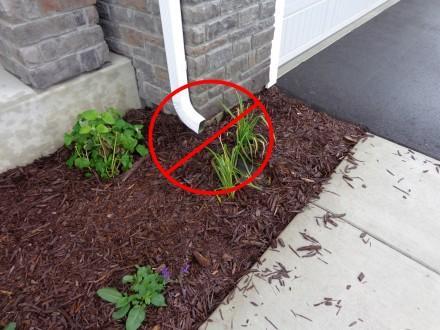In last weeks blog post, I gave advice on how homeowners can inspect their own roof and chimney. For this week's post I was planning to cover the rest of the exterior, but I was crazy to think I could do that in a single blog post. I think the exterior will need to be split up into at least three separate posts: water management, siding, and everything else.
Roof Water Management
Roof water management is HUGE. Experienced home inspectors can drive up to a house and instantly know where there will be water problems, just by paying attention to where water gets directed from the roof when it rains. The best way to inspect the roof water management at the exterior of your home is to walk around your house during the middle of a big rainstorm. You'll notice problems that you never would have noticed otherwise. The video below shows a home with an undersized drain system for the downspouts. The small corrugated drain couldn't handle all of the water coming off the roof, so water was shooting all over the place in very unnatural ways.
This next video shows a new construction home in Chaska that had water shooting off the roof right against the window and the stone veneer siding. This wall will almost certainly experience major water intrusion problems if this isn't corrected very soon.
The simple fix for the water being directed against the window above is to have gutters installed at the house. I can't stress the importance of gutters enough. I've seen hundreds of water problems at decks, windows, doors, and siding that could have been prevented if gutters had been installed. Gutters prevent water problems, and should be installed on almost every home; new or not. I blogged about water management at new construction houses last year: http://www.structuretech1.com/2013/08/new-construction-tip-plan-for-water-management/
If gutters are already installed, pay attention to where water from the downspouts is directed. The downspouts should extend well away from the house, and the water should flow away from the house at the downspout terminals. If downspouts end short of walkways or landscape edging, they're basically draining into a moat around the house, and possibly doing more harm than good when it comes to preventing basement water intrusion. Get that water draining away from the house.

Also, make sure the gutters and downspouts aren't leaking. It's easiest to figure that out in the rain.
Ground Water Management
Ground water management is all about preventing basement water intrusion, and preventing foundation problems. Water needs to drain away from the building. That's the long and short of it. The best time to inspect this on your own home is during the middle of a rain storm. Look for ponding water next to the house, and look for any water that doesn't drain away.
For more information about ground water management and preventing basement water intrusion, click here: http://www.structuretech1.com/2014/04/wet-basements/
That's all for this week. Next week the topic will be siding inspections.
Author: Reuben Saltzman, Structure Tech Home Inspections







